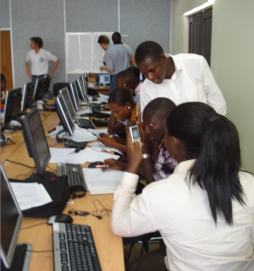While mobile phones have found broad application in reporting health, financial, and environmental data, there has been little study of the possible errors incurred during mobile data collection. This paper provides a quantitative evaluation of data entry accuracy on mobile phones in a resource-poor setting.
Via a study of 13 users in Gujarat, India, the authors evaluated three user interfaces: 1) electronic forms, containing numeric fields and multiple-choice menus, 2) SMS, where users enter delimited text messages according to printed cue cards, and 3) voice, where users call an operator and dictate the data in real-time.
Results indicate error rates (per datum entered) of 4.2% for electronic forms, 4.5% for SMS, and 0.45% for voice. These results caused the authors to migrate our own initiative (a tuberculosis treatment program in rural India) from electronic forms to voice, in order to avoid errors on critical health data. While our study has some limitations, including varied backgrounds and training of participants, it suggests that some care is needed in deploying electronic interfaces in resource-poor settings. Further, it raises the possibility of using voice as a low-tech, high-accuracy, and cost-effective interface for mobile data collection.

